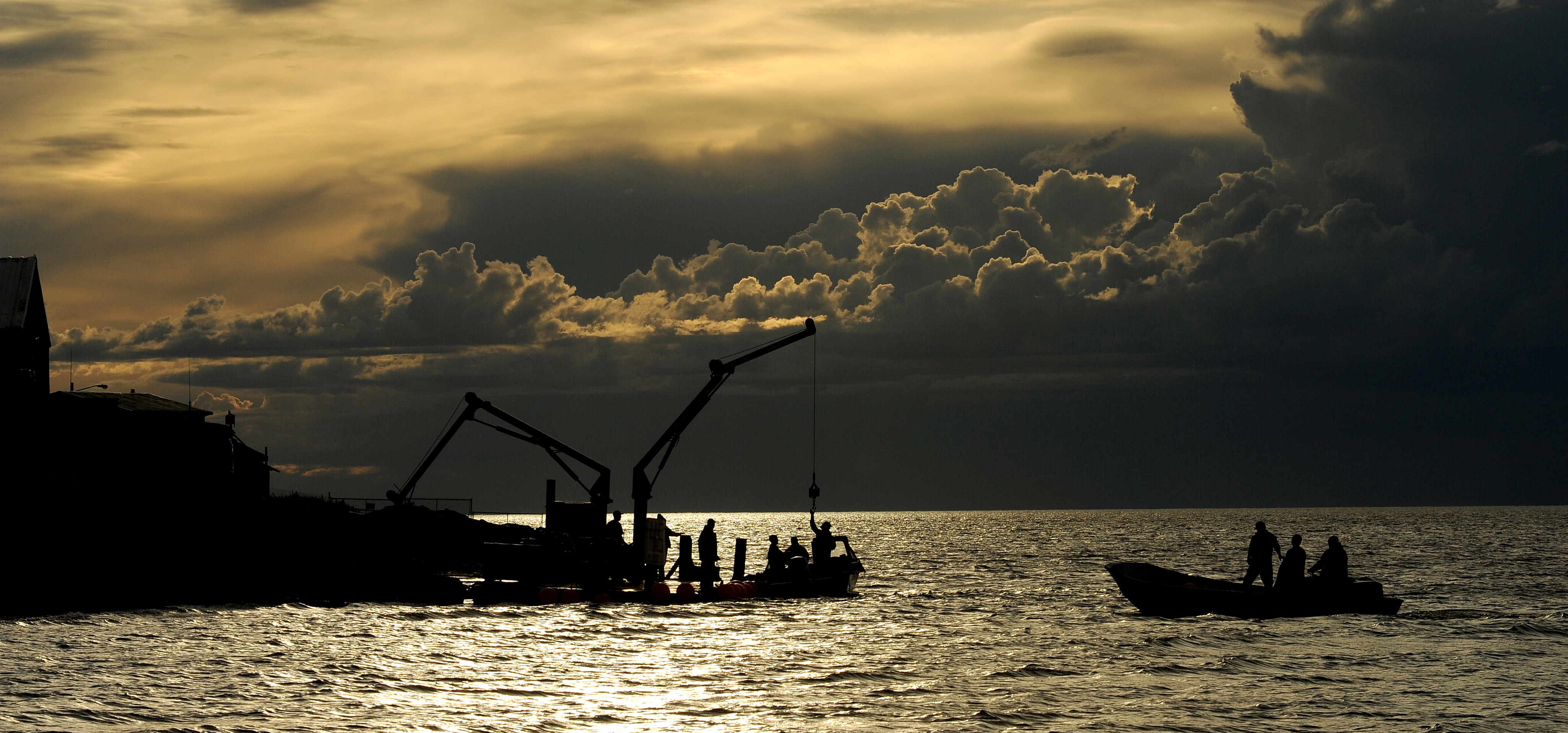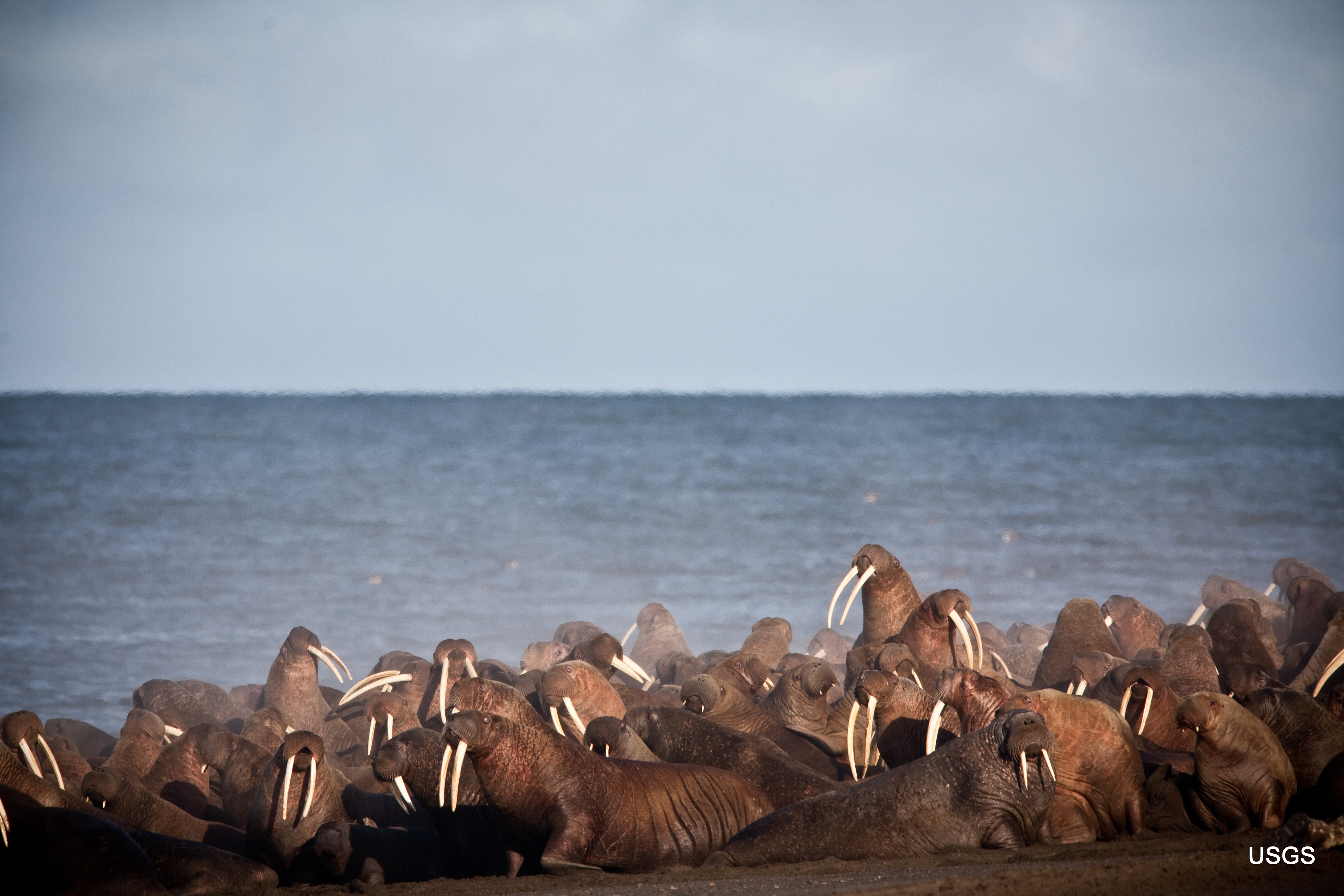After 46 years in operation, an uncertain future for Alaska Sea Grant

Last week, President Donald Trump signed a sweeping executive order at the Environmental Protection Agency to reduce the federal government’s role in setting and enforcing national climate change regulations. But this is only the latest in a long line of incursions on climate change programming, science production, and federal funding.
At the signing, Trump promoted the order as an effort to “eliminate federal overreach” and to “start a new era of production and job creation.” Eliminating national policies and regulation on climate change will affect the Arctic region both by increasing greenhouse gas emissions, and in turn rising temperatures, and by reducing the support available to Arctic communities to adapt to the effects of climate change that can no longer avoided. Beyond the order, one proposed cut to Arctic programming is Alaska Sea Grant.
The Alaska Sea Grant Program of the National Oceanic and Atmospheric Administration may well be the next climate-oriented casualty of the Trump administration. In The Trump Administration’s proposed budget to Congress, NOAA received a 26 percent cut to its overall budget, including the entirety of the Sea Grant Program.
“Sea Grant is a university-NOAA partnership,” Paula Cullenberg, the Director of Alaska Sea Grant at the University of Alaska Fairbanks told High North News.
“There are 33 Sea Grant programs, all in coastal and Great Lake states as well as Puerto Rico and Guam.”
The Sea Grant program’s mission is to enhance the practical use and conservation of coastal, marine, and Great Lakes resources in order to create a sustainable economy.
Sea Grant is celebrating its 50th Anniversary in 2017, and has been active in Alaska for 46 years — but this may be its last. “If the budget cut that was proposed, if that is what was to happen, we wouldn’t exist anymore,” Cullenberg warns. “It is set up that Alaska Sea Grant receives $1.6 million a year in federal funds, that the university is then required to match. So really, the bones to build the program come from the federal funding and we leverage that for additional funding that supports a whole range of other projects that relate to a lot of different aspects of what we do – tribal groups, other federal agencies, and other state agencies.”
Alaska Sea Grant has roughly 15 small, simultaneous projects in operation currently. Without the federal funding, Sea Grant would not be able to build on any of those program sor introduce new projects. “I don’t know what would happen. We would go away I guess.”

Alaska Sea Grant does a lot – not just for the American Arctic, but the entire circumpolar region.
“76 percent of [Alaska’s] population lives on coasts and rivers – and are deeply dependent and involved in natural resources at a level that is not replicated anywhere else in this country,” Ms. Cullenberg explains to contextualize Sea Grant’s work.
“Our role is to serve as a catalyst and thought leader and supporter of moving our state forward and keeping our resources healthy. We do that in a number of different ways. About 40 percent of federal funds support research through a biannual call for research proposals.”
That research goes to monitoring shoreline erosion, helping fishing fleets interact with growing marine mammal populations, and supporting youth development in coastal communities, among many other important issue areas. Beyond research, Alaska Sea Grant fosters environmental literacy in America’s Arctic state through student education opportunities from Kindergarten coastal marine curriculums to post-graduate fellowships designed to help launch young people into their careers.
Alaska Sea Grant’s outreach does not stop in the classroom. Each year Sea Grant holds the Alaska Young Fishermen’s Summit. Over the course of three days, young fishermen and women get to network, build skills like public speaking and business management, and learn about regulatory processes and the science of fisheries management. Beyond the Summit, 12 coastal Sea Grant extension agents provide marine advisory programs to communities across the state that focus on local needs. One extension officer based in Nome in the Bering Strait Region, Gay Sheffield, spends much of her time on subsistence marine mammals, birds, and fish to help with subsistence hunting. In her work on marine mammal diseases and issues, Gay Sheffield has research and education materials translated into Russia so that information and best practices can be shared across the border. As Cullenberg reminds us, “there is no real boundary to prevent information sharing in the Arctic.”
“We share a lot of common issues in the Arctic,” Cullenberg goes on.
“We have a significant Indigenous population in our state and Alaska Sea Grant is always mindful of traditional knowledge and local knowledge in community monitory and marine advisory agents.” Being mindful also means that capacity building in communities – like information sharing – can’t stop at the American border.
“We provide guidance across the Arctic in best practices in developing community monitoring program.”
Those monitoring programs help communities to better understand how to adapt to declining sea ice and coastal erosion. The programs also teach people how to use emerging ecosystems for subsistence, like how to harvest salmon if you have never seen it before.
“One of the strengths of Sea Grant is being a credible trusted source of information. We are a publically funded organization within a university, so we should be supporting creative ideas and moving our state [Alaska] forward,” Cullenberg said when making the case of Sea Grant’s importance to Alaska and the wider Arctic region. At a time when misinformation and climate science denial is paramount, this is all the more important.
When asked about next steps for Alaska Sea Grant, Cullenberg was hopeful, but cautious.
“We focus so much on economic sustainability and economic diversification. I feel like our congressional representatives understand the importance of what we do, and we are going to ask our stakeholders and partners to advocate for support.”